Original text by Marina Belova
And again I will bore you with technical details ![]()
I'm gradually drawn to the conclusion that no two machines are alike: each has a unique aspect.
For example, my Velles 15 is known for two troubles:
The upper thread comes out of the needle after trimming. This does not happen every time, but often, especially when I embroider with polyester threads, which is very unpleasant because you have to stop whatever you're doing and run to the machine.
The upper thread is not always trimmed. The lower thread is trimmed all right, but not the upper. My machine has had this problem from the very beginning: sometimes it's not so bad and sometimes it can reduce me to tears.
I like a lot about Velles 19, but it's supply-failure detector is not working properly: it signals when the bobbin thread is long gone. So the design may go many stitches ahead before the upper thread won't get twisted and break as the result, and the detector signals at last. I will still have to see about that, all the more so because I've peeked into the books and understood that you don't have to call a serviceman for the preliminary diagnostic operation and troubleshooting. We can do some things by ourselves. As always, the most important thing is to know what you're doing. When I figure out what causes the trouble, I'll by all means write about it.
But back to performing the diagnostics on the Velles 15. There are more problems here, therefore, they are of greater importance.
So, according to the whole bunch of materials I've studied on the subject, it comes down to this:
First, we have to check the following possible reasons for the thread coming out of the needle, for they are the most obvious:
a. The upper thread tension being too tight. Check and adjust in case that this is it. I've written about it here at much greater length. But I dare the following: adjusting the upper thread tension on the Velles 15 is some fun. I even think of buying a new set of knobs so as not to wonder anymore why some are winding and some aren't, and why I can adjust this but not that.
b. Compensation spring is out of place. Not every machine has this tricky thing, I've written about it here. There are still no clear instructions on how to use it, to my profound regret.
c. Too short a thread tail after the trimming. I won't give instructions on that, but the length of the tail must be adjusted somehow.
If this didn't help, you need to check and adjust more complex units and mechanisms:
1. Picker
In case somebody does not know, a picker is this thing marked by an arrow on the photo:
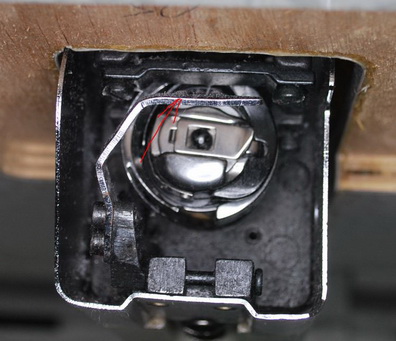
This is how it looks from the side:
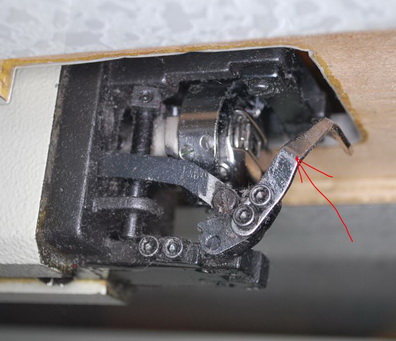
Judging by the ancient Toyota machines guides, which, as rumor goes, were the first Velles progenitors, you need to check three parameters — that is if you find out that it works at all:
a. The clearance between the picker and the bobbin case should be about 0,5—1 mm in a stop position:
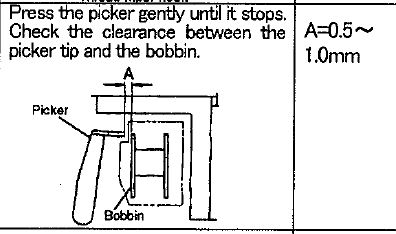
The "funniest" thing is that there is no such clearance in my Velles 15. The picker bumps up against the bobbin because there is nothing there to stop it. I delved into it. Basically, there is nothing so complex about this unit. In this case, a platform was provided for setting the gap correctly, which is held in place with these screws (circled in red):
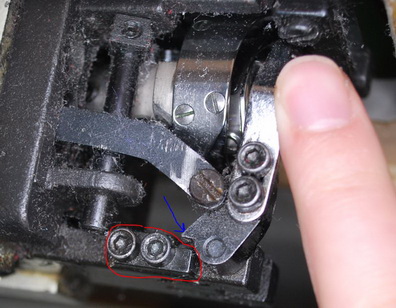
Supposedly, when the machine makes a stop and trims the thread, the picker should bump up against this metal groove (circled in red) with its tip (a blue arrow) — correct me if I'm wrong:
I believe that this platform should be adjusted in some way (raise of fall) so that the user could set the gap correctly. BUT! As my husband said, those hands that made all this should be torn away. Broadly speaking, the problem is that the picker in the machine cannot be adjusted at all, there are no means of doing it. We have screwed the detail loose and tried even to turn it upside down, but it didn't work. Thus, in the way the machine is assembled now, the clearance between the platform and the tip is 1—1.5 mm! The tip doesn't bump up against anything, the bobbin itself restrains the picker:
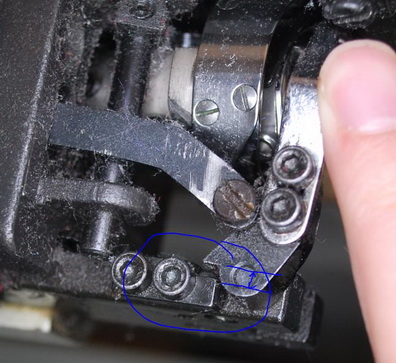
The metal plate that was botched by the "professionals" cannot be neither turned nor shifted — in fact, you are not able to do anything with it. A replacement is needed.
This is how the things are: You solve one problem… and encounter a new one in the process.
Out of curiosity, I went to see how this thing was handled in Velles 19. It turned that everything was in order: there was a clearance between the picker and the bobbin, which could be adjusted, and everything was done neatly:
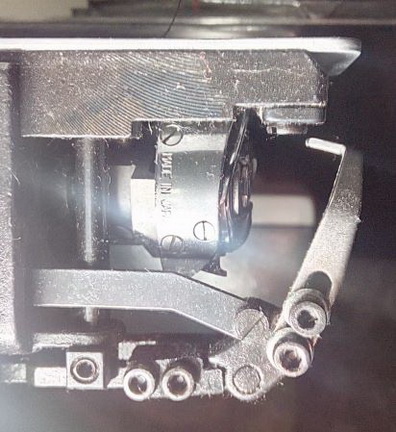
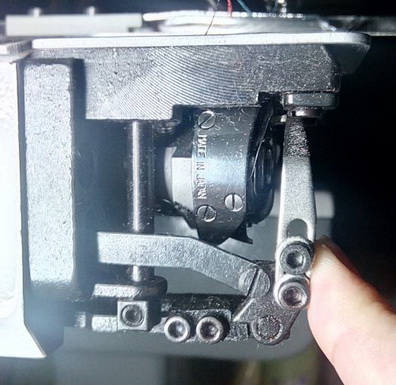
b. Then, by reference to the various sources, the picker position against the main shaft is usually checked — to see whether it hasn't shifted right or left. Or whether the shift didn't exceed 1 mm (my picker is off the center, you can see that with the naked eye without checking):
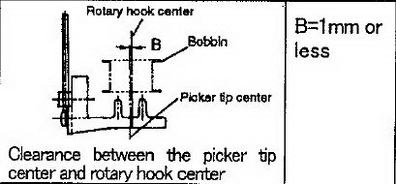
c. Then you should check the picker height in relation to the center of the bobbin at the same time. The height between the center and the upper point should be 7—9 mm.
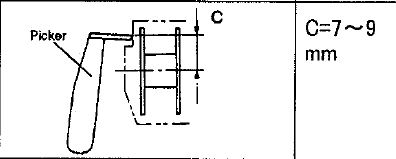
But the servicemen persuaded not to check the last two things, but to confine myself to the clearance. This is easier, and more so because I can't even imagine with what to check this last parameter. But it seems clear how it can be adjusted. All you need is to loosen up the screws shown on the photo and set the necessary height — there are grooves for moving up and down:
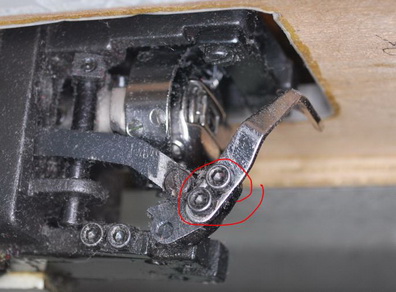
There you have it, an important unit in the machine may cause problems with the thread coming out of needle.
2. The next unit to check is the thread take-up lever. Here it is in case somebody is not familiar with it:
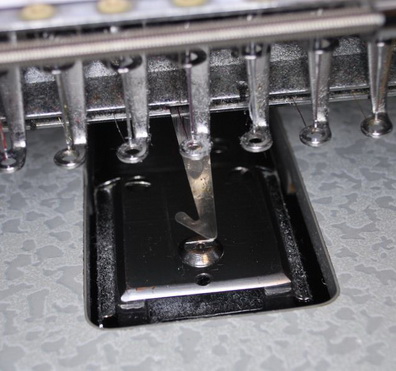
Here you should make sure that:
a. The lever has not been damaged.
b. The lever puts the thread into the thread holder (the throat behind the needles, marked with an ordinary sticker).
These two options, too, were advised to me by the service engineers. Having read the materials from various sources (naturally!), I found out that I can adjust the hook myself, too. But this I haven't tried yet because it seems to be working properly.
Summary: I didn't solve the problem. But we have already thought what could be done in order to repair the picker and see where it would take us.
The more I embroider, the more I think that everybody should know their machine inside out. But who could teach us?
Edited by Irina



There are no reviews to display.